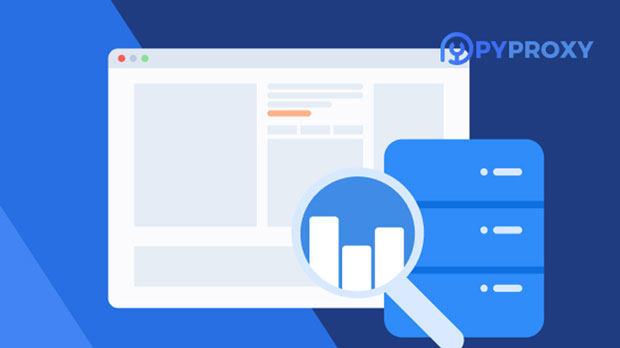In today’s digital age, online privacy and security are becoming increasingly important, leading many users to consider the use of proxy servers. Proxy Anti Blokir is one such tool, designed to bypass internet censorship and blocks by acting as an intermediary between the user and the internet. However, a common question arises: does using Proxy Anti Blokir affect internet speed? The short answer is yes, it can. This article will delve into the reasons behind potential speed reductions, factors influencing internet speed, and how to mitigate these effects, providing valuable insights for users looking to optimize their online experience. What is Proxy Anti Blokir?Before understanding how Proxy Anti Blokir affects internet speed, it's essential to grasp what it is and how it functions. A proxy server is a middleman that processes requests from a user’s device and then sends them to the destination server. Proxy Anti Blokir specifically refers to a proxy designed to bypass geographic restrictions, firewalls, or internet censorship, allowing users to access content that may be blocked in their region.How Proxy Servers Affect Internet SpeedOne of the fundamental aspects to consider when using any proxy server, including Proxy Anti Blokir, is its impact on internet speed. Below are the key factors that contribute to this:1. Increased LatencyWhen a user connects to the internet through a proxy server, the request first passes through the proxy before reaching the destination server. This additional step increases the time it takes for the data to travel from the user’s device to the server and back, known as latency. Higher latency can lead to noticeable delays in page load times, streaming, and overall internet performance.2. Distance Between User and Proxy ServerThe physical distance between the user and the proxy server also plays a significant role in speed reduction. If the proxy server is located far from the user’s location, the data must travel longer distances, resulting in slower speeds. For example, if the proxy server is in another country, users may experience longer loading times due to the increased travel distance of the data.3. Server Traffic and OverloadProxy servers, especially free ones, often experience heavy traffic. If multiple users are trying to access the internet through the same proxy server, it can become overloaded, which significantly slows down internet speeds. Paid proxy services generally offer better performance because they tend to have higher bandwidth, fewer users per server, and faster processing times.4. Encryption and Security FeaturesProxy Anti Blokir services often include additional layers of security, such as encryption, to protect user data and ensure anonymity. While this is an essential feature for privacy, it can also affect speed. Encryption requires extra processing power to encrypt and decrypt the data, which can increase the time it takes to send and receive information, thus reducing the overall speed of internet activities.Factors Influencing the Degree of Speed ImpactSeveral factors determine how much Proxy Anti Blokir will slow down your internet connection. These include:1. Type of Proxy UsedThere are various types of proxies, such as HTTP, HTTPS, SOCKS5, and residential proxies. The type of proxy you use significantly impacts the speed. For example, HTTPS proxies, which encrypt data, may slow down connections more than HTTP proxies, which do not provide the same level of security. Residential proxies tend to be slower than data center proxies due to the way they route traffic through real devices.2. Internet Speed and Connection QualityThe speed of your internet connection is also an essential factor. If you already have a slow connection, using a proxy server might exacerbate the issue. Conversely, if you have a high-speed internet connection, the impact on speed from using Proxy Anti Blokir may be less noticeable, especially if the proxy server is of high quality.3. Proxy Server Location and QualityAs mentioned, the physical location of the proxy server matters. But beyond just the distance, the quality of the server itself plays a role. A well-maintained, high-quality proxy server will offer faster speeds than a poorly maintained, overloaded one. For optimal performance, choose a proxy service with a reliable server infrastructure and proximity to your location.4. Network CongestionDuring peak usage times, internet traffic on a proxy server can become congested, leading to slower speeds. This issue is especially common for free proxy services, which are often oversubscribed. A high-quality paid proxy service will have measures in place to prevent congestion, ensuring that users experience consistent performance.How to Minimize Speed Loss When Using Proxy Anti BlokirWhile it’s clear that Proxy Anti Blokir can impact internet speed, there are several steps users can take to mitigate the effects:1. Choose the Right Proxy ProviderOpt for a premium proxy service with fast servers and minimal user load. Premium providers typically offer better performance with dedicated servers that ensure faster connection speeds. Researching and selecting the right proxy provider is key to balancing both security and speed.2. Use a Proxy Close to Your LocationTo reduce latency, choose a proxy server that is geographically closer to your location. Many proxy services allow users to select a server in a specific region, which can improve speed and reduce delays.3. Check Your Internet ConnectionEnsure that your internet connection is stable and fast. If you’re experiencing slow speeds, it may be due to your own internet provider rather than the proxy server. Use a wired connection instead of Wi-Fi, if possible, for more stable and faster speeds.4. Enable or Disable EncryptionSome proxy services allow users to toggle encryption on or off. If speed is a priority and you do not need extra security for every activity, consider disabling encryption when browsing general websites. However, always enable it when accessing sensitive or personal data to ensure privacy.ConclusionUsing Proxy Anti Blokir undoubtedly introduces an additional layer of privacy and security, but it can also result in slower internet speeds due to factors like latency, server load, and encryption. The degree of speed reduction depends on several factors, including the quality of the proxy server, its location, and the type of proxy used. By carefully selecting a high-quality proxy provider, choosing servers closer to your location, and ensuring a stable internet connection, users can minimize the impact of proxy servers on their online experience. While there may be some trade-off in speed, the security and access benefits often outweigh the performance sacrifices for many internet users.
Jul 10, 2025



































































